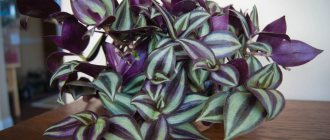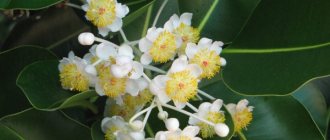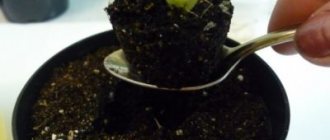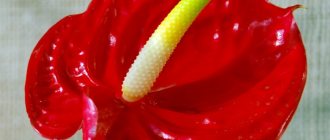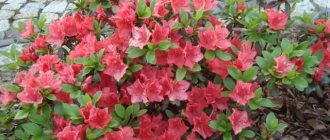Description
The name comes from pyretos, which translates into Russian as “fever”. Some species are actually used in medicine as powerful antipyretics. It was first mentioned in the articles of Dioscarides (1st century AD) as an effective medicine for headaches and arthritis. In the 17th century, the tanacetum flower was recognized as the best remedy for migraines.
Feverfew
People often confuse it with chamomile and call it chamomile because of its similarity with another species. Depending on the variety, the length varies from 5 (dwarf varieties) to 150 centimeters (tall varieties). Flowers can be either simple or double or semi-double. Various colors: yellow, red, crimson. They are grown in mixborders and flower beds, next to trees and other crops. Strengths include:
- A long flowering period – it pleases with bright colors all summer long.
- Unpretentiousness.
- Frost resistance.
If you're short on time or just getting started with flowers, planting and caring is the perfect solution. Visually, it looks like a chamomile and will appeal to fans of this culture. The difference is in the variety of colors and a more lush core.
Properties of pyrethrum - harm and benefit
Beneficial features
In the ancient world, pyrethrum was used to relieve inflammation, lower fever and relieve headaches. The properties of pyrethrum resemble those of aspirin. Officially, English scientists declared the medicinal properties of pyrethrum in the 17th century. At that time it was used as a remedy for headaches. And in the eighties of the last century, the British discovered the unique property of feverfew to relieve migraines. Many people suffer from migraines. This condition can incapacitate a strong young man for a long time, but powder from pyrethrum leaves saves from migraines better and faster than any medications. This happens due to the parthenolide contained in the plant, which blocks the production of serotonin by the pineal gland, namely, an excess of this substance in the vessels and brain cells provokes a migraine attack.
The drugs Lizurit and Methysergide also quickly cope with migraines, but their use is accompanied by unwanted side effects, while feverfew simply does not allow the body to produce the substance that causes migraines. In addition, pyrethrum prevents the formation of blood clots in blood vessels, blocks the production of histamine, and has antiallergic and antimicrobial properties. Applications from pyrethrum leaves are used for arthritis and rheumatism, menstrual pain and asthma attacks, and in combination with medications, pyrethrum is used to treat psoriasis, allergies and dermatitis.
Contraindications
Pyrethrum is contraindicated for pregnant women, nursing mothers, children under two years of age, persons taking coagulants, and those who have an individual intolerance to pyrethrum.
How does it reproduce?
To increase the population, use any of the following methods:
- Division. As soon as the bush has bloomed, dig it up and carefully shake off the soil from the roots. They are divided into several rosettes, which are planted separately. Care is the same as for adult specimens. Experienced gardeners advise dividing regularly. The procedure promotes rejuvenation.
Planting maiden primrose - Cuttings. For propagation, root shoots are taken. Cuttings are rooted in the summer, but choose a shaded place and cover with film. Then the young seedlings will not dry out.
- Seeds. For a plant such as pyrethrum, growing from seeds is also relevant. But the problem is that daughter bushes often lose the characteristics of their parents. If you just need to decorate the area with new flowers, feel free to sow the collected seeds. If the priority is to preserve the existing characteristics of the variety, try propagation by other methods.
The subtleties of growing pyrethrums and caring for them
This is a plant for lazy gardeners, because... It does not require special care. It loves both the sunny side and the shade. But with a lack of sun, the plant stretches out, grows much taller, and blooms less. This fact should be taken into account when choosing a landing site.
No special soil is required for planting; it is important to avoid wetlands. Caring for the plant consists of periodically loosening and watering the soil. You can fertilize the flower with ready-made flower fertilizer. This type of chamomile will not only decorate your flowerbed, but will also ensure that your area is not disturbed by various types of pests.
Growing
Let's look at propagation by seeds in detail. The pyrethrum plant has small seeds. To simplify sowing, they are mixed with sand. Sowing is carried out in early spring, deepening the seeds by 5 mm. To simplify the task, the seeds are simply scattered over the surface in an even layer. For watering use a spray bottle. The container is covered with film, but you can limit it to glass, and place it in a sunny and warm place (+20). When the seedlings appear, the glass is removed. Picking begins after the appearance of the second leaf. Before planting, they are hardened for two weeks.
Autumn sowing
Residents of the southern regions can grow the flower using the seedless method. Seeds are sown in September, germination rate is high. The seeds are not soaked, but the soil is loosened. Lay a groove five centimeters deep and moisten it well. Scatter the seeds in a thick layer and place a little soil on top. There is no need to make a shelter. The seeds quickly take root and overwinter well. Already in March they will delight you with bright buds.
Features of care. Watering
As mentioned above, the “chamomile double” is completely unpretentious in care. It is drought-resistant and requires almost no fertilizing. Young plants are given more attention - they are regularly watered and weeds are removed.
Growing feverfew
Occasionally, loosen the soil so that the moisture does not stagnate and the roots receive enough oxygen. In the future, watering is reduced, since the plants are strong enough and can suppress weeds.
Is flowering delayed, flower growth slows down? Mullein is applied or fed with other fertilizers.
Preparing for winter
As soon as flowering ends, it is recommended to cut off the resulting flower stalks. In autumn, with the approach of cold weather, the stems are also cut off, leaving 10 centimeters. In the middle zone, pyrethrum grows well and does not need additional shelter. It's another matter if you live in regions with snowless but cold winters. The root zone is mulched with leaves and covered with spruce branches.
Planting and propagation
Pyrethrum is usually propagated by seeds and less often by cuttings. The seed method is simpler and has a higher survival rate. Reproduction, planting and care will not require any special effort. Some gardeners recommend planting pyrethrum and forgetting it, it will grow on its own. However, for this you need to choose the right place, plant the plant on time and take care of the soil. If the conditions of your region or the soil on the site do not allow you to not care for the plant at all, it is better not to neglect the rules of care.
Pyrethrum propagation methods:
- If you want to propagate pyrethrum this same summer to get more bushes, take young root shoots of the plant. Dig them out carefully so as not to damage the roots. This will not cause any harm to the mother plant. Plant the dug up shoots in pots or directly into the ground, but carefully cover them with film.
- To propagate Pyrethrum by seeds, you must first collect them. You need to collect the seeds in the fall, when the flowers fade. The seeds are dried and stored in a dark, dry room until spring.
- Pyrethrum is propagated by seedlings. In March, the finished seeds are sown in a container with prepared, nutritious, moist soil. The seeds need to be distributed on the surface of the soil and carefully sprinkled with a thin layer of soil. There is no need to try to sprinkle the seeds thickly; they will interfere with each other when pecking. After planting, the container with the seeds is taken to a bright but cool place. The temperature should be no more than 20 degrees. After this, the seeds will begin to hatch. If you see that you have planted the seeds too often, you can thin them out after the leaves appear. As soon as the seedlings grow, they are planted in separate cups. When the seedlings adapt and become stronger, they can be planted in open ground. It is better to do this in May, when it becomes warm enough.
The place for planting Pyrethrum must be chosen especially carefully. They can be grown in partial shade, but it is better to choose a well-lit place. In this case, for the first 2 weeks it is better to cover the plants from the midday sun so that the young shoots do not get burned.
Pyrethrum grown from seeds does not retain the quality of the mother plant. When planting, flowers of any color may appear. Plants grown from seeds begin to bloom 2-3 months after planting.
Care tips from experts
- The flower grows quite quickly, so it can reproduce by self-sowing. If you don’t want to thin out dense thickets every six months, cut off the buds right away and don’t wait for seeds to form. By the way, another reason. In this way, you provoke another flowering, and pyrethrum can delight you with a lush flower carpet even in August-September.
Pruning pyrethrum - Regardless of which propagation method is chosen, tanacetum grows well only in a lighted place. Of course, nothing will happen to the plant in the shade. However, it will become less attractive. The stems will begin to stretch upward in search of light, and the inflorescences will become smaller.
- Every 2-3 years the flowers are thinned out. Due to strong growth, the number of flowers decreases sharply.
Advantages and disadvantages
Pyrethrum is a bushy plant, which is popularly called Caucasian, Persian or Dalmatian chamomile. This is due solely to external similarities, although the plant also exhibits medicinal properties.
If we talk about the pros and cons of growing ornamental plants on the site, then it is worth highlighting the following points.
Pros:
- A variety of colors allows you to choose the color that you like best. The varieties are pink, cherry, dark burgundy, orange, and white.
- According to the shape of the inflorescence, the petals are arranged in one row, or terry caps are formed, and they form a dome-shaped shape.
- It is good not only in the flowerbed, but also suitable for cutting and arranging bouquets.
- Under favorable conditions, it is capable of re-blooming in the autumn.
- Tolerates shaded areas.
- They exhibit winter hardiness.
- It is drought-resistant, therefore, if the owners are absent in the summer, the plant will not die without watering.
- Can be planted in heavily shaded areas without much hassle.
- Suitable for growing in flowerpots.
- It has a number of medicinal effects, so lovers of traditional medicine can adapt to taking different above-ground parts of the plant in the treatment and prevention of certain types of diseases.
Of the minuses, we can highlight only a few points that are not significant:
- After 3 years of flowering in the same area, the decorative effect of the flower becomes lower and gradually disappears. Therefore, after this period it is worth resuming planting pyrethrum.
- Despite the described effect of treatment with Pyrethrum and even the release of medicines based on the plant at a certain period, doctors considered that the side effects were pronounced, so they stopped producing medicines based on this plant. When taking foliage or other parts as folk remedies, you must be very careful with these manipulations so as not to harm your health. And be sure to take contraindications into account.
Diseases
The plant is highly resistant to diseases. However, with improper care, insufficient or excessive watering, it can also get sick. The above-ground parts of the bush are affected by a fungal disease - gray rot. If a fluffy coating appears, you will have to remove the affected specimens and destroy them. The area where pyrethrum grew is treated with a fungicide.
Pyrethrum bush
Fusarium is another infectious disease. The pathogen penetrates through the root, affecting the vascular system of the flower. Unfortunately, it is impossible to cure the plant. It is taken out of the ground and burned. This way you can stop the further spread of the infection. The remaining bushes are sprayed with fungicide.
Among the dangerous pests are slugs that feast on the leaves of the plant, thrips and aphids. Slugs are collected by hand, plants with thrips are destroyed, and insecticides Biotlin or Actellik are used to control aphids. It is not always possible to get rid of aphids immediately, so spraying is repeated after a week.
Pyrethrum maiden: areas of application of tincture
The use of infusion has proven itself in the treatment of such ailments as:
- Disruptions of the menstrual cycle (for example, scanty or heavy bleeding, painful periods);
- Insufficient uterine tone;
- Headaches (migraine);
- Psoriasis;
- Hives;
- Chronic inflammatory process in joints;
- Asthma.
Feverfew flowers are a component of the medicine Psorilen. The treatment complex was developed by a Russian-American enterprise specifically for the treatment of psoriasis.
Varieties
There is no exact information about the number of varieties. Some say there are 50 of them, other gardeners talk about a hundred species. Let's list the common ones:
- Feverfew. Also known as Matricaria, up to 50 cm high. Inflorescences with a diameter of 4 cm, flowers double or simple. You should expect flowering in about 80-90 days. This usually occurs in July and lasts until August. A popular variety is Snow Globe.
Maiden - Pyrethrum shield. The perennial is native to Eastern Europe. Erect stems reach a meter, and basal leaves - 40 centimeters. The number of flowers is up to twenty, the inflorescences are formed in the form of corymbs.
- Pink is a perennial plant, often grown as an annual or biennial plant. The color of the petals is various shades of pink. There is a hybrid pyrethrum with inflorescences up to 12 centimeters in diameter.
Pyrethrum pink
- Large-leaved - one of the tall varieties, growing up to 150 cm.
- Robinson's pyrethrum giants were bred as a result of long and painstaking work. Red pyrethrum is considered one of the most popular. Like other Robinson giants, the stem length reaches 80 centimeters. Inflorescences are large 10-centimeter baskets. It blooms for about a month. You can see it in discounts.
Robinson's Giants
- Scarlet Star is a luxurious perennial variety with 12-centimeter inflorescences. They have a rich red tint. Planted in flower beds and used to create bouquets.
We can also see pyrethrum Duro, Troubadour and Giant Rose. The latter is a variety of Robinson red pyrethrum.
Types and varieties of pyrethrum with photos and descriptions
Gardeners cultivate not a very large number of types of pyrethrum. But it must be taken into account that such a flower has a very large number of different varieties and garden forms.
Beautiful pyrethrum (Pyrethrum pulchrum = Tanacetum pulchrum)
This species can be found in natural conditions in Northern China, Kazakhstan, Central Asia, Northern Mongolia and Siberia. This flower prefers to grow in the tundra, on rocky outcrops and slopes near glaciers. This perennial plant is rhizomatous and semi-rosette, it reaches a height of about half a meter, and on the surface there is pubescence consisting of winding hairs. A few weakly leafy shoots are erect. Green basal leaf plates have long petioles, they are double pinnately dissected, can be bare or have sparse pubescence. The length of such leaves is about 15 centimeters and the width is 2 centimeters. The stem leaf blades are sessile. The baskets can be single or included in inflorescences of 2 or 3 pieces. The baskets include tubular flowers of gray color and reed flowers of white color.
Pyrethrum macrophyllum = Tanacetum macrophyllum = Chrysanthemum macrophyllum)
The homeland of this perennial plant is the Caucasus. The height of such flowers can vary from 1 to 1.5 m. The diameter of the corymbose inflorescences is about 10 centimeters, they consist of small white flowers. When the plant begins to bloom, its baskets will change color to brown-red. This flower looks great in large groups, and it is recommended to combine it with switchgrass, variegated miscanthus, reed grass, and other ornamental cereal crops.
Pyrethrum corymbosum = Chrysanthemum corymbosum = Tanacetum corymbosum)
This species comes from the Caucasus, Eastern Europe and the foothills of Altai, and it prefers to grow in dry meadows. This perennial rhizomatous plant has several or just one, branched at the apex, erect shoot, the height of which can vary from 0.4 to 1.5 m. The basal long-petioled leaf plates are about 0.3–0.4 m long. Their leaves are pinnately dissected. The stem leaf plates are similar in appearance to the basal ones, however, they do not have such long plates, while the upper and middle leaves are sessile, and the lower ones are petiolate. Loose corymbose inflorescences consist of 15–20 baskets located on fairly long hairy stalks. The achenes are colored gray, and the reed flowers are white. Flowering occurs in June.
Pyrethrum cinerariifolium, or Dalmatian chamomile
The height of such a herbaceous plant can vary from 0.15 to 0.45 m. The gray-silver leaf plates can be twice or three times pinnately dissected. In the baskets, the achenes are colored gray, and the marginal flowers are light yellow or white.
Red pyrethrum (Pyrethrum coccineum = Chrysanthemum coccineum), or Caucasian chamomile
This flower is often mistaken for pink pyrethrum. Under natural conditions, this species can be found in the Caucasus. It has a large number of different forms with reed flowers, painted in various color shades from dark cherry to white. Quite often among them there are forms with terry baskets. Unlike pink pyrethrum, red pyrethrum has double pinnately dissected leaf blades. The parts of such a plant located above the ground contain substances that are poisonous to pests and absolutely harmless to humans and warm-blooded animals.
Pink pyrethrum (Pyrethrum roseum), or Persian chamomile
The homeland of this species is also the Caucasus. This species has been cultivated by humans for more than 200 years. The shoots are erect, their height can vary from 0.6 to 0.7 m. Pale green rosette leaf plates grow on petioles and are dissected. The stem leaf plates are not as large as the basal ones. The diameter of the baskets is about 50 mm, they are 2 or 3 pieces collected in brushes, but they can also be single. The color of the tubular flowers is yellow, and the reed flowers are pink. This species has a large number of different varieties and forms, which are most often called hybrid pyrethrum. Among this variety there are plants with terry baskets, which are painted white, dark red or pink. The Robinson's mix group of hybrids is the most widespread; such plants have a height of about 0.8 m, the diameter of their pink or red baskets is about 12 centimeters. The most popular varieties of hybrid pyrethrum are:
- Atrosanguinea. The height of the bushes is about 0.6 m, while the inflorescences in diameter can reach 60 mm. The color of the tubular flowers is yellow, and the reed flowers are dark red.
- Brenda. The reed flowers have a deep pink color.
- James Kelway. The height of the bush is about 0.6 m, the diameter of the baskets is about 60 mm. The color of the marginal flowers is scarlet-red.
- I. M. Robinson. The marginal flowers are pinkish in color.
- Kelway Glories. The tubular flowers of this plant are yellow, and the reed flowers are scarlet.
- Lord Rosebery. This variety has densely double baskets.
- Vanessa. The baskets are terry, the yellow center is convex.
Popular garden forms of pink pyrethrum: pink, red, double pink, low and double white.
Pyrethrum parthenium = Chrysanthemum parthenium = Tanacetum parthenium)
Of all the annual pyrethrums, this species is the most popular. Its homeland is Southern Europe. Under natural conditions, such a plant is perennial, like those whose description can be found above, but it is cultivated by gardeners as an annual. The height of the compact bush is about half a meter, it is highly branched. Greenish or green-yellow petiolate leaf plates can be pinnately dissected or deeply cut, with pubescence on their surface. The apical racemose inflorescences consist of small baskets, the diameter of which is 15–30 mm; they can be double or simple. Reed flowers are yellow or white. The most popular garden plants are yellow-leaved (large-lobed leaf blades are pale yellow in color, the marginal flowers are white) and discoid (this border plant has yellow marginal flowers). Varieties with double spherical inflorescences are very popular, for example:
- Silbeoteppich. Ball-shaped terry baskets are painted white.
- Schneebal. The height of the bush is from 0.2 to 0.25 m, the leaf blades are pale green, the diameter of the double white inflorescences is about 25 mm, they contain only tubular flowers.
- Dal White. The white inflorescences are similar in appearance to buttons.
- Snow Puffs, Snow Ball and White Stars. These varieties have round-shaped inflorescences, which have skirts consisting of short, wide reed flowers.
- Virgo. The height of the bush is 0.8 m. The white terry spherical baskets have a diameter of only 15 mm.
- Goldbal. The diameter of the yellow double inflorescences is 25 mm; they contain only tubular flowers.
Application in design
Landscape designers actively use tanacetum when designing flower beds and flower beds. The plant is valued for its unpretentiousness and elegant inflorescences. It is also suitable for edging paths in the garden. Varietal species are good for assembling bouquets. The best neighbors of pyrethrum in the flowerbed will be:
- Poppies.
- Nivyanik, basil.
- Bells.
- Cosmea.
Chamomile is often used to make flower garden edging. The bushes are trimmed and not allowed to bloom. As an option, they sow a bed with different shades and create a real fireworks display of carnations and foxgloves. Are you dreaming of a country-style plot? Then you have definitely chosen the right flower. He will make friends with ornamental shrubs and will coexist with them for many years.
Further care in open ground
Over the course of a week, the seedlings get used to their permanent habitat. Now the development of pyrethrum depends on immunity. A minimum of effort will be required from the florist. The reasons are simple:
- Watering is carried out as necessary. If the flower is mature, then there is enough rain. Provided that the summer turns out to be hot, it is recommended to irrigate 1-2 times a month.
- No feeding required. The only thing that will help you survive the winter safely and continue to bloom next year is digging up the soil in the tree trunk circle with rotted manure in the fall. Provided that the plant develops poorly or blooms poorly, you can apply complex mineral fertilizers.
- Pruning of dried inflorescences and foliage is carried out as necessary. In autumn, only the stems are removed.
- Feverfew rarely gets sick. If there are signs of rot or fusarium, it means that the grower is over-watering the bushes. The problem can be eliminated by eliminating diseased flowers (burn them together with the roots), and the area is disinfected.
Properties
In addition to its beautiful appearance, the plant has a number of useful properties in different areas.
In medicine
First of all, the plant is valued for its medicinal qualities. At the same time, there are not only traditional medicine recipes, but also medications produced in laboratories. From different parts of this chamomile we obtain:
- Anti-inflammatory and antipyretic drugs
. In their effects, tinctures and decoctions from the leaves are similar to the effect of aspirin.” They can be used both internally for colds and inflammatory processes to reduce high fever and disinfect the body, and externally. When used externally, the medicine acts as an antiseptic on wounds and damage to the skin. - Antimigraine
. Pyrethrum is the strongest medicine for migraines. Its action is based on the presence in the pulp of the leaves of a substance that blocks the cause of a painful attack - parthenolide. It eliminates not the symptoms, but the problem itself that causes migraines. Parthenolide stops the production of serotonin, the excess of which in brain cells is the source of pain attacks.
The effects of pyrethrum are comparable only to expensive medications, which, unlike the plant, have a number of side effects.
- Hypertensive
. In combination with other components, it regulates blood pressure, preventing the development of hypertension. - Anti-allergenic
. Pyrethrum accelerates the treatment of various rashes, dermatitis, psoriasis and allergic reactions. It is effective in the form of ready-made tablets and decoctions from the leaves of the plant. - Medicines for women's diseases
. It is not without reason that among the varieties of chamomile one can find “pyrethrum maidens.” It effectively relieves smooth muscle pain, restores a regular cycle, and is suitable for the prevention of these problems.
In cosmetology
The beauty industry has had its share of pyrethrum. This natural ingredient works great in folk recipes and as part of face creams.
. It effectively fights problems such as inflammation, redness, uneven skin tone, early wrinkles.
The use of pyrethrum is indicated for those with problematic skin and acne-prone skin.
.
Pyrethrum extract also soothes overly sensitive skin and relieves irritation.
. This property makes it a necessary component not only in women's care products, but also in men's aftershave lotions.
However, you should be careful when using the drug as a medicine or cosmetic, as it can cause allergic reactions and irritation in the mouth.
On the farm
Insect repellents are made from dried pyrethrum inflorescences. The powder must be diluted in water and watered with the solution on the soil in the beds with vegetable crops. Also, the plant will protect the crop from pests if it is simply planted around the perimeter.
Features of care
Pyrethrum is a plant for those who have little time to care for the garden.
It is enough to plant it in a sunny place or in partial shade, in soil that easily drains water, and beautiful flower bushes are provided by mid-summer.
Pyrethrum maidens is a perennial plant belonging to the Asteraceae family. Previously, many years ago, this flower was used in folk medicine. Pyrethrum is relatively cold-resistant; young plants can tolerate light frosts.
This ornamental plant was brought to us from Southern Europe.
Pyrethrum maiden has many other names, for example, maiden tansy. This name can be found in the literature. This plant can be easily distinguished from the others; its flowers are very similar to chamomile. Pyrethrum maidens is one of the varieties of chamomile, which is loved by gardeners for its modest decorative value.
How to divide a pyrethrum bush
Divide the bush after flowering has ended. Do this every 3-4 years. Dig up the bush, free the roots from the soil, and wash them. Carefully divide into parts and plant the divisions.
In summer, propagate by cuttings (lateral shoots). Root in partial shade, covered with a plastic bottle or film. Transplant to a permanent place of growth in the spring.



